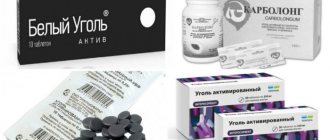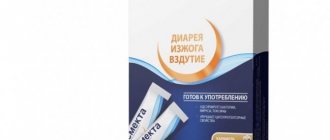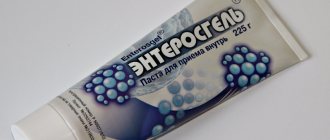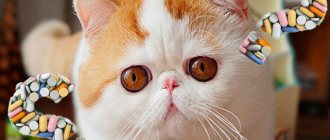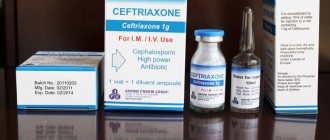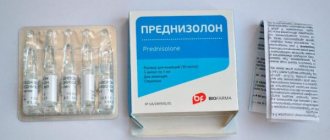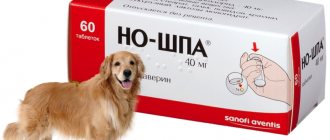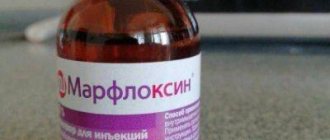12635Pavel
Smecta is rightfully considered one of the most effective drugs that helps a person cope with diarrhea. However, for the felines he became an equally loyal friend. The main thing is to learn how to correctly calculate the dosage. Moreover, you can understand how to give Smecta to a cat by carefully reading just one article. Intestinal upset is not a rare disease for your beloved pet. There is always a reason for diarrhea. It could be something unsuitable for food, obtained on the street, or a stolen piece from the table. In any case, Smecta will be the salvation.
Chemical composition
“Smecta” goes on sale with orange and vanilla flavors. The main active element of the drug is diosmectite.
The number of additional elements in them will differ:
| Orange "Smecta" | Vanilla "Smecta" |
| orange flavoring – 0.01 g | vanillin - 0.004 g |
| vanilla flavoring - 0.05 g | dextrose monohydrate - 0.749 g |
| dextrose monohydrate - 0.679 g | sodium saccharinate - 0.007 g |
| sodium saccharinate - 0.021 |
Contraindications
Smecta for cats against diarrhea is a fairly harmless drug. It has a minimum number of contraindications, which include:
- increased sensitivity to smectite, as well as auxiliary components and flavorings;
- constipation and intestinal obstruction;
- Glucose-galactose malabsorption is a syndrome of genetic genesis characterized by impaired absorption of monosaccharides in the gastrointestinal tract;
- sucrase-isomaltase deficiency is a malabsorption syndrome in which the absorption of disaccharides is impaired, develops with insufficiency of invertase, an enzyme of the digestive tract, and is hereditary.
Is it possible to give Smecta to a cat?
The drug in question can and should even be given to pets. But you need to know the exact reason that caused the disorder, and there can be a lot of them. In a broad sense, diarrhea and vomiting are signs of dysfunction of one of the elements of the gastrointestinal tract.
The risk from this medicine is minimal. In this regard, there is a risk of removing only the symptom, and leaving the cause itself unattended. If the essence of the problem is not known, the drug can be given as first aid, and then go to the veterinarian for a consultation.
Can it be given without a doctor's prescription?
The digestive tract of cats is highly sensitive to changes in diet and food, which often leads to diarrhea. To prevent deterioration and dehydration of your pet, immediate action should be taken at the first sign of diarrhea. For this purpose, rehydration solutions and sorbents are administered to the pet.
Smecta is a harmless adsorbent that is used for diarrhea to remove toxins and normalize the functioning of the digestive system. The drug is available without a prescription. Therefore, if a kitten or adult cat develops the first signs of diarrhea and other digestive tract disorders, you should act immediately and give Smecta.
Do not forget that diarrhea may indicate poisoning of the pet or be a symptom of more serious problems, for example, infectious or allergic in nature. In this case, Smecta alone is not enough and you cannot do without the help of a qualified specialist.
Indications for use
For kittens and adults, the indications are the same - gastrointestinal disorders of any nature. If the reason is a change in diet or poisoning, then you can only get by with the remedy in question. If the cause is an infection, antibiotics, probiotics are used in conjunction with Smecta, or they are replaced with enterosorbents with a wider spectrum of action.
Did you know? Cats can make about 100 different sounds. For comparison, a dog makes only 10 sounds.
For diarrhea
The drug is used in cats for diarrhea of various etiologies:
- intolerance to certain foods;
- allergies - an excess of proteins in the diet can cause such a reaction from the gastrointestinal tract + itching and hair loss;
- violation of the diet - switching from cat food to regular food and vice versa, as well as during the period of transfer of kittens from mother's milk to adult food;
- long-term treatment with antibacterial agents - if the doctor does not prescribe a probiotic for the period of antibiotic treatment, the intestinal microflora is disrupted, which is manifested primarily by diarrhea;
- infectious diseases.
When vomiting
"Smecta" also helps against vomiting caused by:
- infectious diseases;
- overeating;
- ingestion of fur.
In case of poisoning
If the animal is poisoned, whether to give the drug or not depends on the appearance of the vomit. If they contain food or foam, then give medicine and a large amount of liquid. This will be the first help from the owner. Then the cat must be shown to a doctor. If there are inclusions of blood in the vomit, you should immediately go to the veterinary clinic - the animal is suffering from internal bleeding.
Did you know? Cats can turn their ears 180°.
It's all about anatomy - 32 muscles are responsible for the movement of the outer ear in these animals.
Mechanism of action of the drug
"Smecta" has an absorbent effect on the body. The active substance collects toxins and harmful microorganisms found in the intestines and is excreted unchanged along with feces or urine. In addition, the components of the drug come into contact with glycoproteins of mucous tissues and form polyvalent bonds, creating a natural barrier to hydrochloric acid, bile salts and waste products of harmful bacteria.
Dosage and method of use at home
Kittens can be given Smecta from 1 month. It is at this age that babies begin to try their first adult food, which can cause frustration. Diarrhea is very dangerous for cubs, since fluid is quickly removed from their body along with feces. Long-term diarrhea can lead to death.
Did you know? The cat is capable of jumping to a height 5 times higher than its own height.
First you need to prepare a suspension from the powder mass. It doesn’t matter whether it will be diluted for an adult or for a baby, you need to take half the sachet, which is 1.5 g, and dissolve it in boiled warm (+30°C) water. The drug is administered into the pet’s oral cavity using a syringe or a dispenser for children’s medicines in syrups.
For adults, all the liquid collected in the dispenser is poured at once; for babies at 1, 2 and 4 months, it is divided into 3-4 times (given at intervals of 2 hours). The drug can be stored in solution for no longer than 12 hours, so the unused part of the liquid must be poured out and a new portion made the next day. One sachet will last your pet for 2 days.
| Animal age | Suspension dosage (ml) |
| kittens from 1 month | 5–10 |
| adults | 10–20 |
The sequence of actions when administering the medicine to cats:
- Dilute the suspension.
- Draw the required amount into the syringe. Be sure to ensure that there are no air bubbles in the liquid.
- Wrapping the animal in a towel is the task of fixing the paws to protect it from scratches.
- Hold your pet between your knees.
- Pet and calm the cat.
- Pull back the upper lip on one side and pour the liquid through the space between the teeth - you need to give the suspension 2 ml at a time, carefully monitoring how the animal swallows.
Video: how to breed smecta
How to give correctly?
The dosage for a kitten is no different from that for an adult animal - approximately 1.5 grams of powder per 50 ml of water. However, the single dose differs, which should not exceed 20 ml. It will be much better if you give the medicine more often, but little by little. Make sure your baby goes to the toilet. Smecta is excreted in the urine and if the baby does not urinate, most likely the problem is also in the kidneys.
Many years of experience in using Smecta have shown that the treatment is effective for any pet, regardless of age. Even if a side effect occurs - constipation, the baby's condition should improve. It’s easier to deal with constipation; just adjust your diet a little or add a drop of flaxseed oil to your food.
Without food, the baby can live more than a day, but it is better that this period does not exceed 12 hours. If the kitten has not drunk for a long time, the threat is many times more serious, dilute Smecta with plenty of water and force-feed the baby.
Next, we’ll figure out how to give a kitten Smecta to drink. Quite a few animals drink the suspension themselves without any problems, loving its sweetish taste. If the kitten does not refuse liquid, just make sure that he drinks the required amount of the suspension. If there is resistance or refusal, the medicine must be taken forcibly
Since we are talking about a kitten, you need to act carefully and make sure that the baby does not choke.
Some tips:
- Use a 2cc syringe without a needle so you can accurately dose the volume of suspension.
- Let the kitten sniff the syringe before drinking it; the baby will be calmer if he understands what is happening.
- Do not pour the suspension between the incisors; it is better to stick the nozzle of the syringe from the side, between the chewing teeth.
- If the kitten is choking, postpone the procedure and help him calm down.
- No matter how small the kitten is, it can scratch or bite strongly, so for the procedure, it is better to wrap it in a thick towel.
- Pour the suspension a few milliliters at a time, lift the kitten’s head and stroke the neck - this way you will achieve maximum swallowing and the baby will not choke.
Advice: if the kitten resists strongly and a lot of the suspension has spilled, it is better to play it safe and increase the dose. An overdose of Smecta is not dangerous, at least not more dangerous than severe diarrhea.
After the first dose of the suspension, you need to closely monitor the patient for 1–3 hours. Typically, noticeable improvement occurs during this period. Even if the kitten feels much better, taking Smecta should be continued for 1-3 days. The fact is that toxins will continue to be produced in the intestines until the pathogenic flora is completely destroyed, and this (with the best forecasts) takes a day.
Lack of improvement within 3 hours indicates that you have calculated the dosage incorrectly or that the cause of diarrhea is not due to intestinal irritation. You can take a risk, drink Smecta again and wait another hour, but it is better to take the baby to the clinic right away. The suspension has only a local effect, that is, it will not help if the kitten has severe poisoning or liver problems. The condition will improve, but the root cause will not be eliminated, which is dangerous and leads to the loss of precious time.
The last warning concerns kittens picked up on the street. Stray babies are most often affected by worms, which can also cause diarrhea. Smecta does not help against worms, but ordinary parasiticides cannot be given for diarrhea. You need to see a doctor or use a gentle suspension for kittens, which kills and paralyzes worms. It is impossible to combine drinking Smecta and poisoning parasites, since the absorbent will significantly reduce the effectiveness of the anthelmintic suspension.
Vomiting is a reflex process in which the contents of the cat's stomach are thrown out through the oral cavity. The gag reflex is controlled by the vomiting center, which is located in the medulla oblongata; impulses to it come from nerve endings that are located in the abdominal cavity. Vomit usually contains food debris, gastric juice, mucus, and possibly the presence of bile and blood.


